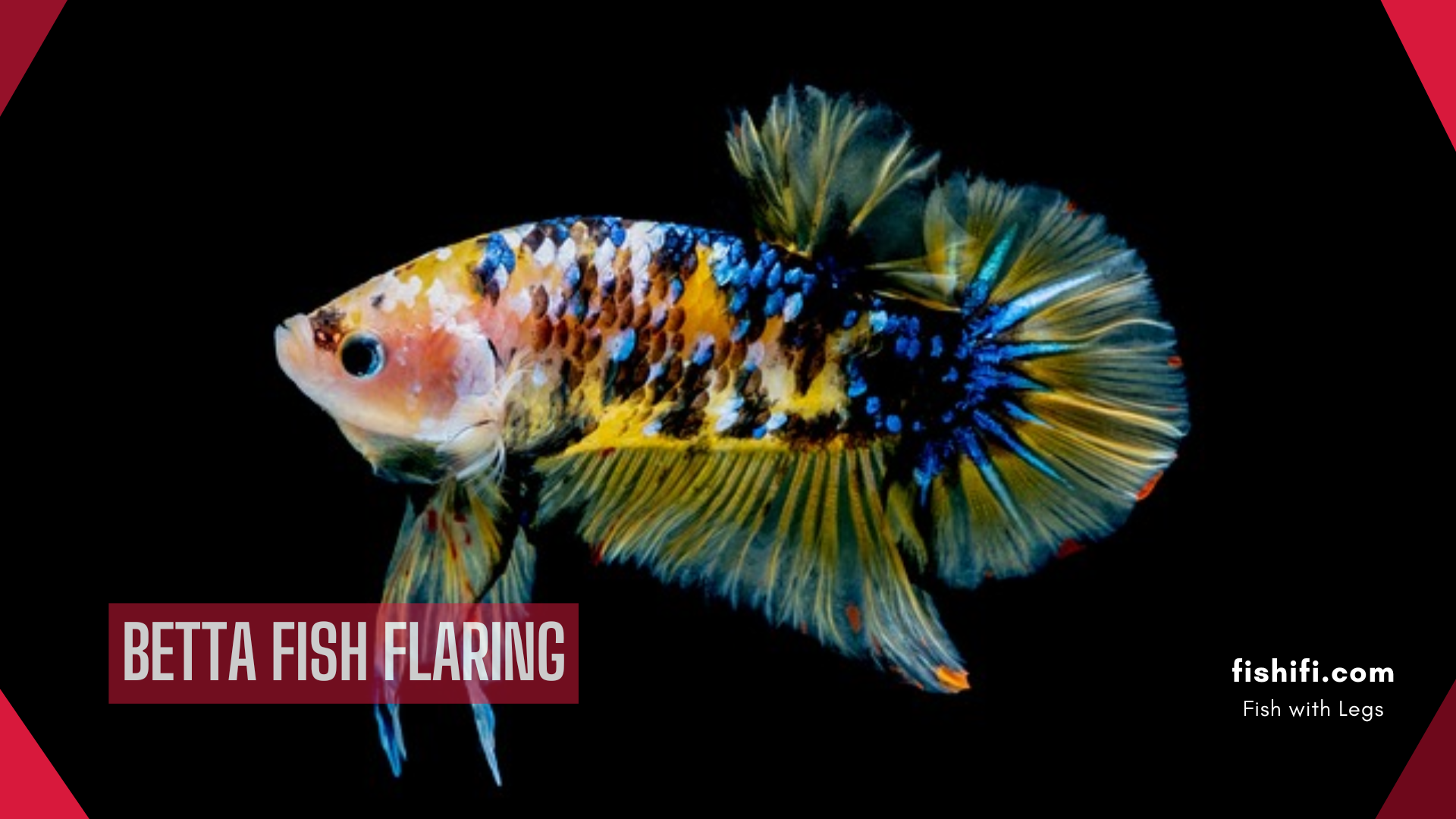Among the many unique traits of Betta fish, one of the most iconic is their behavior known as Betta Fish Flaring. Flaring occurs when Betta fish expand their gill covers and spread their fins dramatically, giving the impression of increased size and presence. This behavior is not inherently negative; rather, it is a natural response to certain stimuli in their environment. Bettas typically flare in reaction to perceived threats, such as an approaching rival or a sudden change in surroundings, and when they detect potential competitors encroaching on their territory.
Few fish species are as widely recognized and celebrated in the aquarium hobby as the Betta fish, commonly called Siamese fighting fish. Known for their stunning display of vibrant color patterns, and diverse tail forms, these captivating creatures are often the centerpiece of freshwater aquariums worldwide.
For those considering adding a Betta fish to their aquarium, understanding the reasons behind their flaring behavior is essential. It provides valuable insights into their well-being, temperament, and how they interact with their environment.
Table of Contents
Signs of Betta Fish Flaring
For experienced Betta keepers, seeing a Betta fish flaring its gills and extending its fins may be a familiar and fascinating behavior. However, for beginners, this striking display can raise questions and even concern. Recognizing and understanding the key signs of flaring is essential for ensuring your Betta is happy and stress-free in its environment. Below, we break down the signs of flaring in Bettas and what they mean.
1. Fanned-Out Fins
When a Betta fish flares, its fins fan out to their fullest extent. This includes the dorsal (top), caudal (tail), and anal (bottom) fins. The result is an expansive and stunning display that accentuates the natural beauty of the Betta. Male Bettas, in particular, showcase their long and colorful fins in this manner as part of their species.
This behavior is not just for aesthetics—it serves an important purpose. By spreading its fins to their maximum width, a Betta makes itself appear larger and more intimidating to any perceived threats, rivals, or even reflective surfaces it mistakes for another fish. While breathtaking to witness, this is a territorial and defensive maneuver signaling that the Betta is prepared to assert dominance.
2. Expanded Gill Covers – Operculum Flaring
One of the most striking aspects of Betta flaring is the puffing up of their gill covers, scientifically known as opercula. This causes the area around the Betta’s head to swell, further enhancing the fish’s apparent size and intimidating presence.
For beginners, this behavior might look alarming at first. The gills seem to expand dramatically, and it’s easy to misinterpret this as a sign of distress or sickness. However, this is a completely natural and instinctive display used by the Betta to protect itself or defend its territory. Combined with their fanned-out fins, this makes the Betta a formidable sight.
3. Aggressive Body Posture
Flaring Bettas often adopt an unmistakable posture that conveys their readiness to confront a threat. This involves the fish orienting its body directly toward the object or creature it perceives as a rival. At the same time, the Betta positions itself slightly sideways, allowing its fins and puffed gills to be fully visible and maximized for intimidation.
This stance highlights the territorial and dominant nature of Bettas, particularly males. In the wild, this behavior is a prelude to a more aggressive encounter. Two male Bettas might face each other in a flaring contest, circling and posturing before engaging in a physical confrontation. While such fights are a natural part of their behavior in the wild, it is important to note that captive Bettas should never be placed in situations where they might harm each other.
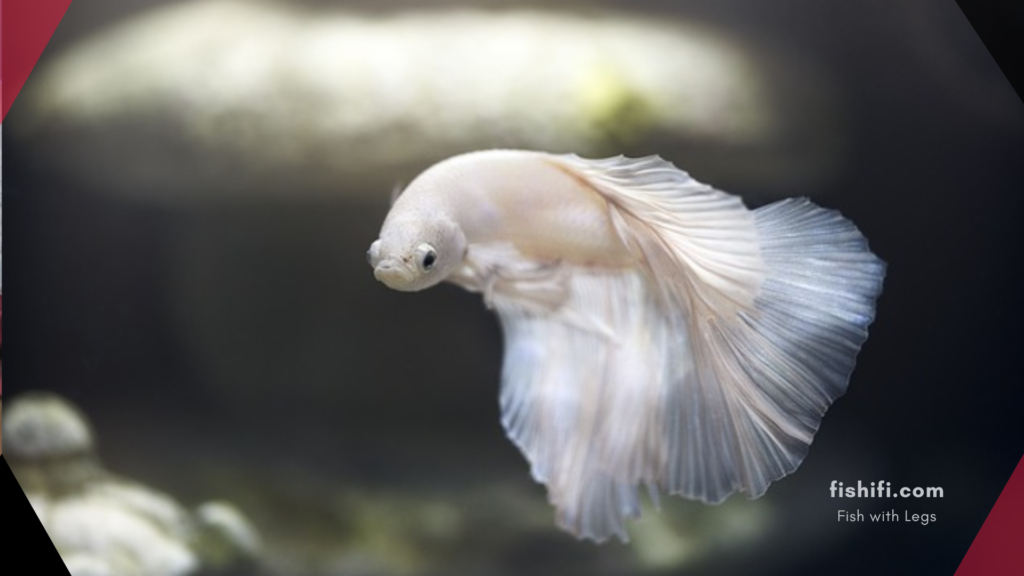
Related: Swim Bladder Disease and Treatment
Why Do Bettas Flare?
Flaring is deeply rooted in Betta’s instinctual behavior. It is primarily a defense mechanism meant to establish dominance, ward off perceived threats, or prepare for combat. Common triggers for flaring include:
- Reflective Surfaces: Bettas may flare at their reflection, mistaking it for another fish.
- Other Bettas: Seeing another Betta, even briefly, can trigger territorial displays.
- Unfamiliar Objects: Sudden changes in their environment, like the addition of new decorations, can also elicit flaring.
When Should You Be Concerned?
While flaring is natural and even healthy for Bettas in moderation, excessive or constant flaring can indicate stress. If a Betta is flaring too frequently, examine its environment for triggers such as mirrors, overly bright lights, or proximity to other fish tanks. Addressing these issues will help maintain your Betta’s well-being and prevent unnecessary stress.
Understanding the signs of Betta flaring allows hobbyists to appreciate the fascinating nature of these fish while ensuring their comfort and care. Flaring is an extraordinary display that highlights the Betta’s unique personality, beauty, and evolutionary instincts.
Reasons for Betta Fish Flaring
Now that you can recognize betta fish flaring behavior, it’s important to understand what triggers this response. Identifying the root cause is crucial to distinguish between normal, instinctive reactions and behaviors that may indicate stress or discomfort. let’s discuss the key reasons your Betta might be flaring and what they signify.
1. Territorial Behavior
The primary reason Bettas flare is due to their strongly territorial nature. In the wild, Betta fish establish and defend their hunting and living territories. This instinct remains even in captivity, driving them to protect their space from perceived invaders.
- Claiming Territory: If your Betta is housed in a smaller tank (10 gallons or less), it is likely to consider the entire aquarium as its territory. In larger tanks exceeding 10 gallons, your Betta may choose a particular corner or area to claim as its own.
- Defending the Territory: Anything that enters or gets too close to this claimed space—be it another fish, a reflection, or a new decoration—can be perceived as an intruder. Your Betta will respond by flaring to ward off the “threat” before it can act.
This natural defense mechanism is not inherently harmful but can become problematic in overcrowded tanks or setups with tank mates that encroach on the Betta’s territory. Ensuring adequate space and carefully considering tank mates can reduce stress for your Betta and prevent excessive flaring.
2. Perceived Threats
Even beyond territorial disputes, Betta fish are highly sensitive to perceived threats within their environment. These threats may be real or, more often, a misunderstanding due to the Betta’s reliance on visual cues and instinct.
Here’s why perceived threats might trigger flaring:
- Misidentification of Tank mates: Bettas are highly visual creatures with a limited understanding of their surroundings. They rely on instinctive reactions rather than discernment. Long-finned fish, such as guppies or certain tetras, might be mistaken for another male Betta. To a Betta, the sight of elongated fins signals potential competition or danger, prompting an immediate flaring response.
- Other Visual Triggers: Even objects like reflective surfaces or newly introduced ornaments in the tank can resemble another Betta or unknown intruder. Bettas may puff up and flare at their reflections or unfamiliar shapes, mistaking them for rivals or threats.
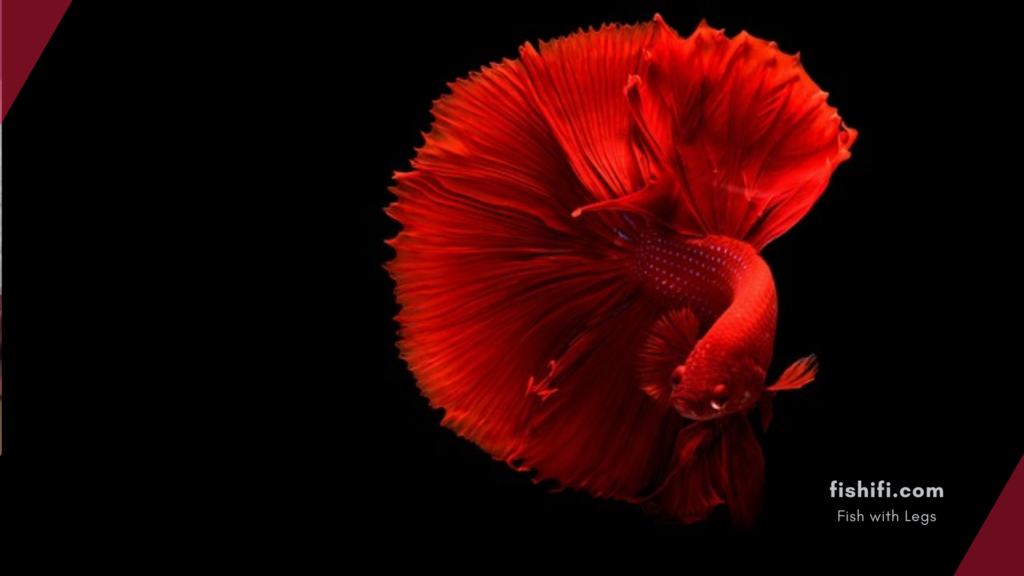
Related: The Fascinating World of Betta Fish
How to Minimize Flaring Triggers?
While flaring is a natural and often healthy behavior, frequent or excessive flaring can stress your Betta. Here are some tips to mitigate unnecessary triggers:
- Limit Reflections: Reduce reflective surfaces in the tank by using non-reflective glass or providing consistent lighting.
- Choose Tankmates Wisely: Avoid placing long-finned or overly active fish in the same tank as your Betta. Consider calmer, less visually striking species that won’t provoke a territorial response.
- Provide Space: Ensure your Betta has adequate room to establish its territory without feeling constantly threatened.
By understanding the reasons behind your Betta’s flaring, you can create an environment that supports its instincts while keeping unnecessary stress to a minimum.
Stress Response in Betta Fish
Betta fish are highly sensitive creatures, and stress can significantly impact their behavior and overall well-being. When a Betta is stressed, it may exhibit behaviors like flaring more frequently, sometimes even appearing aggressive.
Causes of Stress That Trigger Flaring
- Tank Cleaning
While cleaning the tank is essential for maintaining water quality and the health of your fish, it can be a frightening experience for a Betta. From their perspective, the process involves sudden disruptions in their environment, unfamiliar movements, and the rearranging of decorations or hiding spots.
- Impact on the Betta: The sudden changes and the presence of your hand in their tank can be perceived as a threat. This might lead to aggressive flaring, and in some cases, the Betta may even attempt to strike at your hand in defense of its territory.
- How to Minimize Stress: To reduce stress during cleaning, consider temporarily moving your Betta to a separate holding container while you clean and rearrange their tank. Keep movements slow and deliberate to avoid startling them.
- Frequent or Prolonged Flaring
If your Betta is flaring more often than usual without any obvious triggers, it may be a sign of underlying stress. Persistent stress can negatively affect their immune system, making them more prone to illness.- Signs to Watch For: Look for other stress-related indicators, such as rapid swimming, hiding for long periods, lack of appetite, or dull coloration.
- Solutions: Evaluate their tank environment for stressors, such as inappropriate water parameters, poor filtration, or lack of hiding spots. Addressing these issues can help alleviate the problem and create a more comfortable space for your Betta.
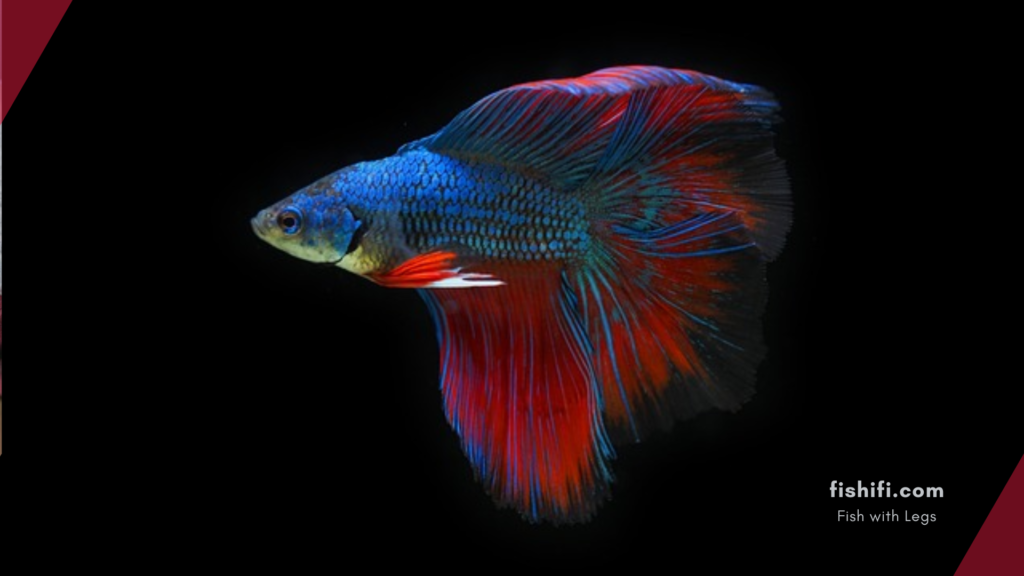
Stretching Behaviour in Betta Fish
Similar to humans and countless other animals, Betta fish engage in occasional stretches, extending their bodies and fins for flexibility and comfort. As a form of stretching is a natural and healthy behavior that helps them stay agile and maintain muscle tone.
How to Recognize Stretching Behavior
- Fins Fully Extended
During a stretch, a Betta will flare its fins to their full extent, including the dorsal, caudal, and anal fins. This ensures proper exercise and movement for the fins, preventing stiffness or reduced mobility. - No Focused Aggression
Unlike stress-induced flaring, stretching doesn’t involve aggressive posturing or a specific focus on a target. If your Betta is stretching, you won’t notice behaviors like fixating on an object, facing another fish, or displaying side-to-side circling movements. Instead, the Betta will appear relaxed, performing the flare as a standalone action.
Why Stretching Is Beneficial
Stretching is a sign of a healthy, active fish. It helps maintain proper circulation and keeps their fins in good condition, particularly for Bettas with long, flowing fins that are more prone to damage. A Betta that stretches regularly is often well-adjusted and comfortable in its environment.
Distinguishing Stress from Stretching
Being able to tell the difference between stress-induced flaring and natural stretching is crucial for understanding your Betta’s needs.
- Stress Flaring: Often occurs in response to specific triggers like tank cleaning, perceived threats, or environmental stressors. It’s usually accompanied by aggressive posturing, fixation on a target, or frantic behavior.
- Stretching Flaring: Happens occasionally, typically without external stimuli, and involves calm, deliberate fin extension. There are no signs of aggression or unease.
By observing your Betta’s behavior and environment closely, you can ensure they’re stretching healthily and not flaring excessively due to stress. Creating a stable and peaceful habitat will encourage positive behaviors while minimizing unnecessary stress.
How to Minimize Betta Stress
While occasional gill flaring in Betta fish is perfectly normal and even healthy, excessive flaring can signal stress or discomfort. Thankfully, there are several steps you can take to minimize unnecessary flaring by ensuring a calm, secure environment for your Betta. Here’s a detailed guide to creating a stress-free habitat for your Betta, reducing excessive flaring, and promoting their well-being.
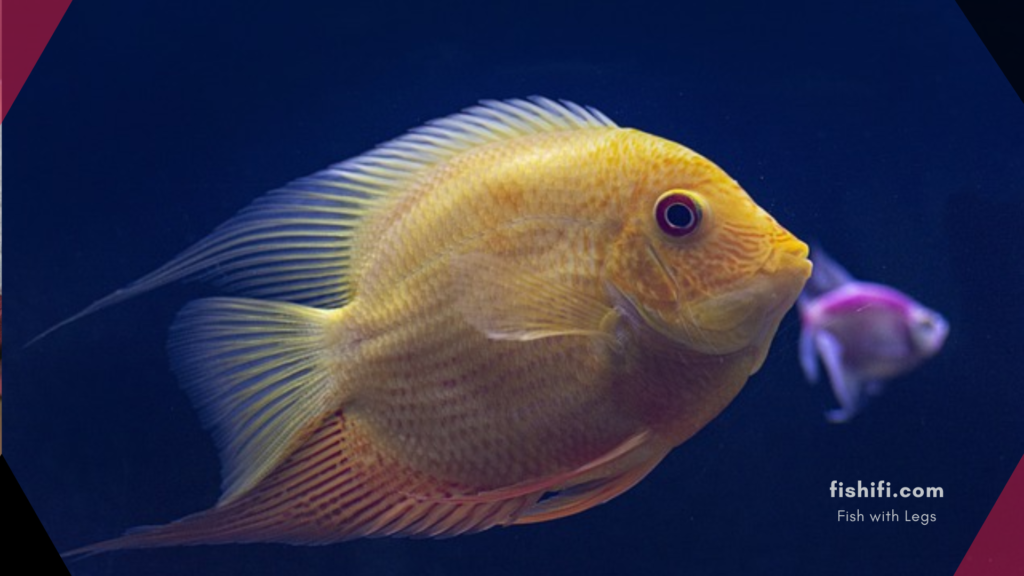
Related: 5 Popular Extinct Fish With Legs
1. Create a Cozy Habitat
A comfortable, well-structured tank is fundamental to keeping your Betta happy and reducing stress.
- Mimic Their Natural Environment: Bettas thrive in environments that resemble their natural habitat, which consists of slow-moving or still water with plenty of cover. Include live or artificial plants, caves, and smooth decorations that provide both shelter and exploration opportunities. This setup helps your Betta feel secure, reducing the likelihood of stress-induced flaring.
- Provide Ample Space: Ensure the tank is spacious enough for your Betta to swim comfortably without feeling cramped. A tank size of at least 5 gallons is recommended as a minimum, but larger tanks allow for better movement and territory establishment.
2. Maintain Stable Water Parameters
Fluctuations in water quality or temperature can be highly stressful for Betta fish, leading to aggressive or erratic behaviors such as excessive flaring.
- Ideal Water Temperature: Keep the water temperature within the range of 78–80°F (25.5–26.5°C). Bettas are tropical fish, and deviations from this range can weaken their immune system and heighten stress levels.
- Regular Water Testing: Monitor key parameters like pH (preferably between 6.5 – 7.5), ammonia, nitrite, and nitrate levels. Use reliable water test kits to ensure these values remain within safe limits.
- Use a Quality Filter: Bettas are accustomed to gentle water flow. Choose a filter that provides efficient water circulation without creating strong currents, which can tire or overwhelm your fish.
3. Avoid Overcrowding
Betta fish are highly territorial, especially males. Placing them in an overcrowded tank can lead to territorial disputes, causing persistent flaring and stress.
- Tank Size Matters: A single Betta should not be housed in less than 5 gallons of water. If you’re adding tank mates, ensure they have plenty of room to stay out of the Betta’s territory.
- Choose Tank mates Wisely: Avoid housing your Betta with other long-finned or aggressive fish, as they may trigger the Betta’s territorial instincts. Peaceful and fast-moving species, like certain tetras or bottom-dwellers, are better-suited companions.
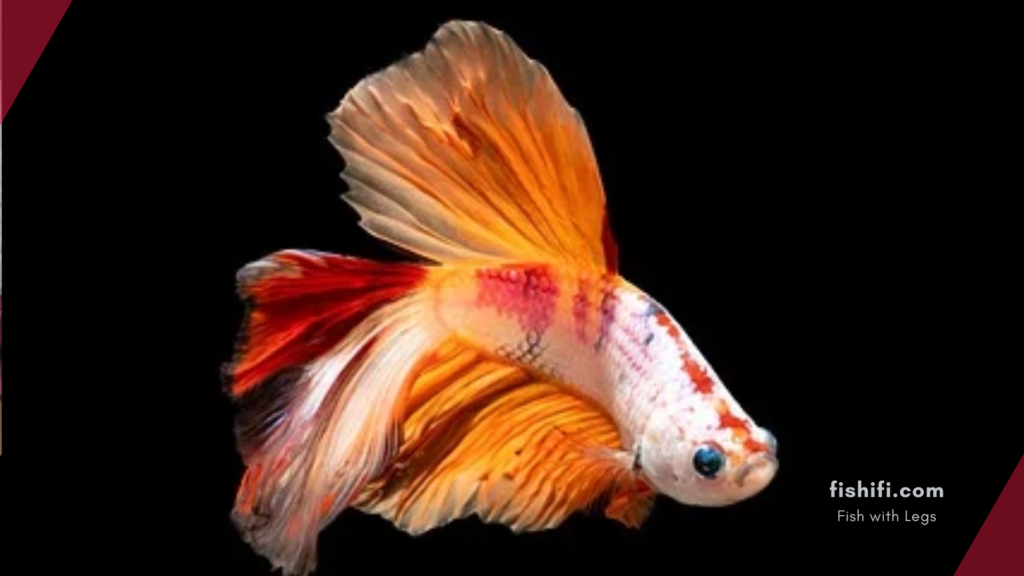
4. Handle Changes Gradually
Sudden changes to their environment can overwhelm Bettas and provoke defensive flaring.
- Subtle Adjustments: When redecorating the tank or rearranging plants and structures, make small, gradual changes rather than large-scale overhauls. Bettas are territorial and may react poorly to sudden disruptions in their familiar surroundings.
- Use a Temporary Holding Tank: If major changes are necessary, consider transferring your Betta to a temporary tank during the process. This minimizes their exposure to stress during the clean-up and allows them to adjust to the new setup more smoothly when reintroduced.
5. Limit Flaring Triggers
Certain activities or stimuli can provoke your Betta to flare unnecessarily. Identifying and limiting these triggers will help maintain a calmer environment.
- Avoid Mirrors: While it might seem fun to watch your Betta flare at its reflection, using mirrors repeatedly can lead to unnecessary stress. Limit this practice to short periods, if at all, as an occasional exercise.
- Minimize Aggressive Encounters: Do not place two male Bettas in the same tank or in adjacent tanks where they can see each other. The presence of another male triggers their instinct to defend territory, leading to persistent flaring.
- Reduce Excessive Interaction: Bettas can feel overstimulated if you tap the glass, constantly move your hand near the tank, or otherwise disturb them frequently. Handle interactions thoughtfully to avoid causing distress.

